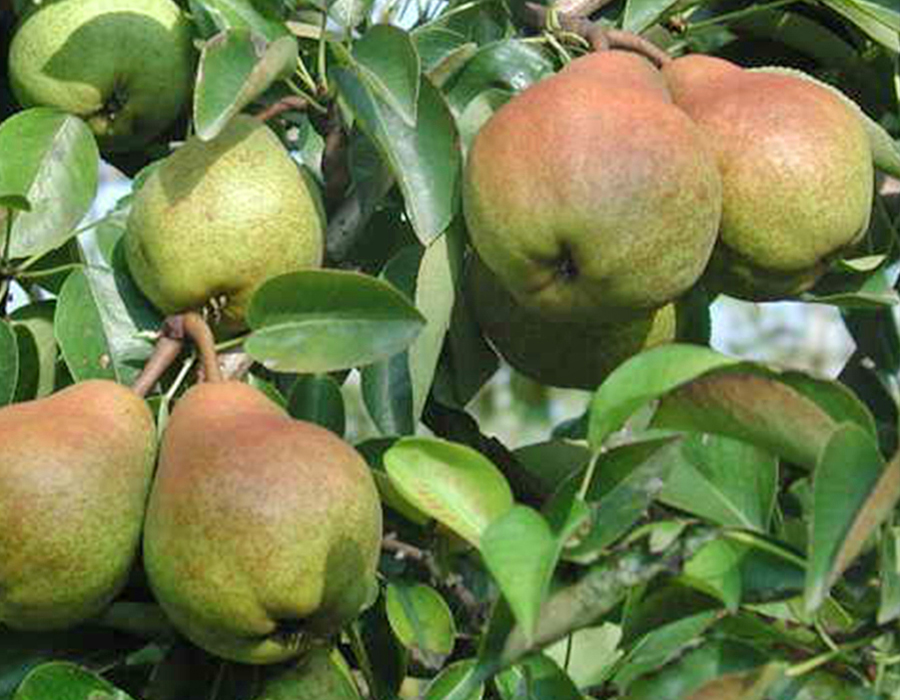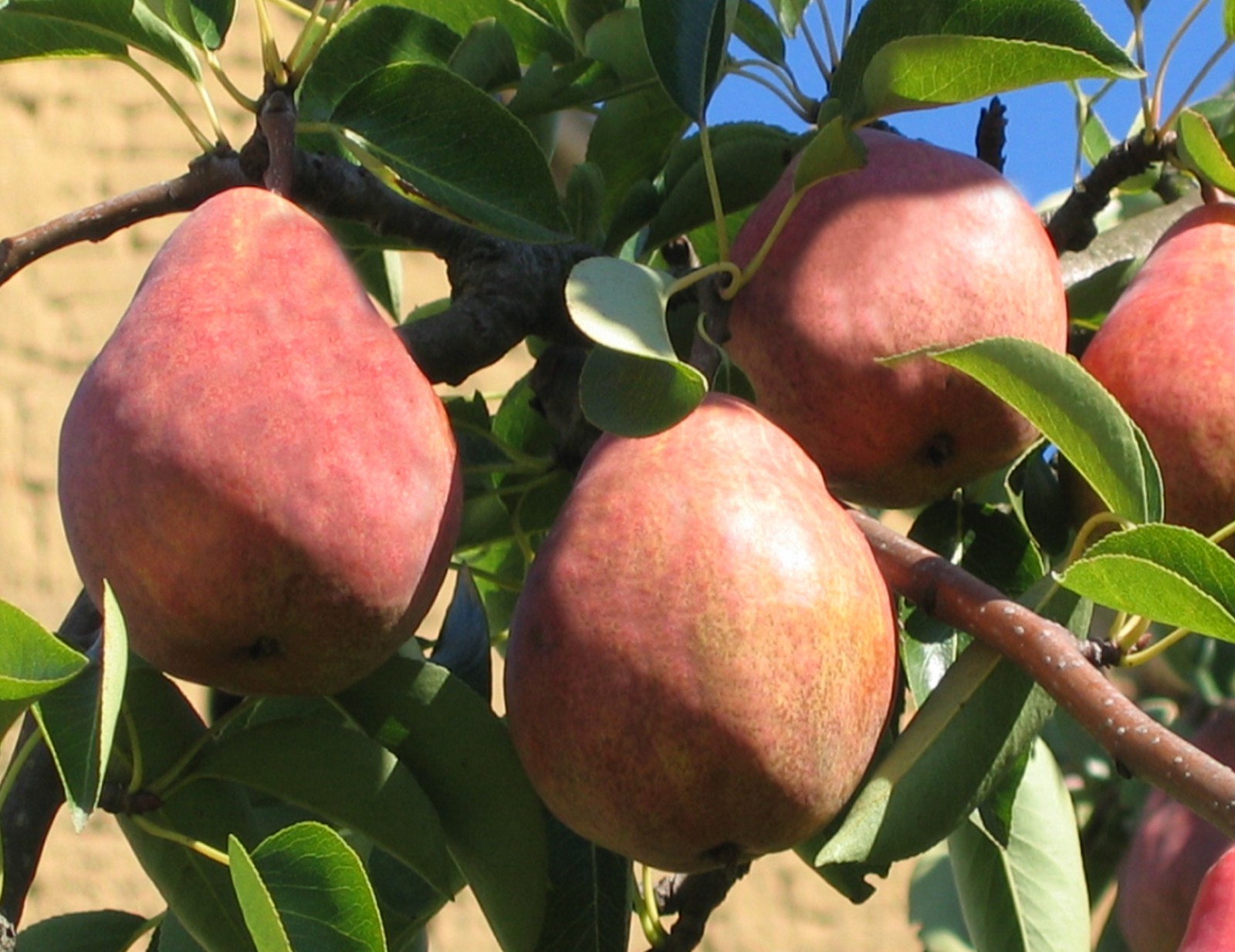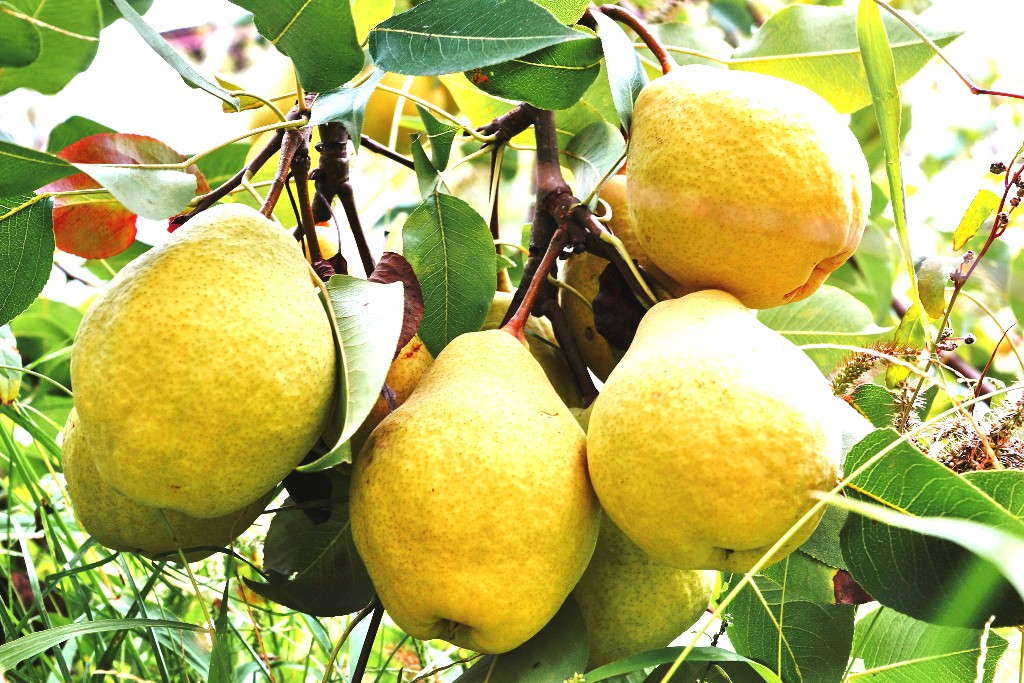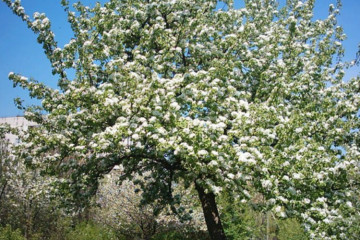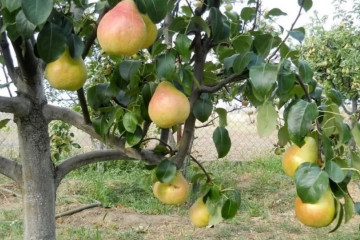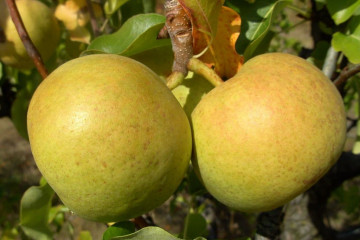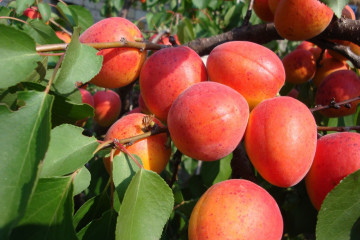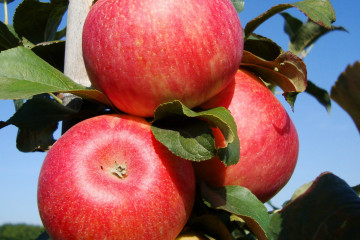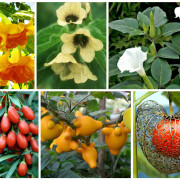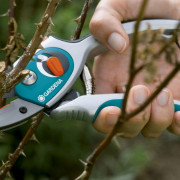Pear Williams - description and characteristics of the variety
Content:
Fruit crops have long been popular among gardeners. There is no area where, apart from currants, apple trees and plums, there would be no place for a pear. The Williams pear is especially held in high esteem by gardeners. It is famous for its unpretentious care, sweet, aromatic fruits and high storage rates. In addition, there are several subspecies of the variety that bear fruit earlier or later in the summer season.
Description and characteristics of the variety
This pear variety got its name thanks to an English breeder. The creator was focused on the warm climate of his region and did not really care about adapting the culture to the frosty winters of Russia. Therefore, the variety is recommended to be grown in mild climates.

The Williams pear variety is famous for its unpretentious care, sweet aromatic fruits and versatility in processing.
The tree is not tall, rarely grows up to 3 meters in height. It has a classic ovoid foliage, slightly curved with shine on the outside. The crown is dense, pyramidal. Shoots are powerful, thick, curved. The culture is not self-fertile, so there is a need to plant a pollinator variety next to it. Begins to bear fruit after the third year of life. The fruits are juicy, fragrant.
Description of the tree
The tree grows quickly, rapidly. Fruits from 3-4 years, in the presence of quince as a rootstock. After the first fruiting, Williams' growth slows down. The spreading, thickened crown grows at an angle. Branches of a brownish shade with a gray tint, bending to the ground under the weight of the fruit. The pear is not capable of self-pollination. The leaves are large, oval, smooth and shiny. On the edge of the leaf there are small, frequent notches. Blooms late.
Fruit
Fruits are usually pear-shaped, large. The weight of each fruit ranges from 170 to 250 grams. The skin is thin with dark specks. Fruit color is yellow with ruddy sides. Some subspecies may be red in color.
The pulp is juicy with a creamy shade. Delicate in texture, with a slight graininess. The fruit tastes sweet, honeyed with nutmeg notes. The aroma is bright, intense.
Productivity and storage of fruits
Each inflorescence of the variety has at least 5 flowers, of which 2-3 pears are tied. The harvest ripens in early August. The yield characteristics of this crop were highly appreciated. The older the tree, the more fruit. But do not forget about the influence of external factors: the place of growth, climate and agricultural technology.
A tree older than 10 years, with good care in mild climatic conditions, can please a gardener with a 150 kilogram harvest.
At room temperature, the fetus will lie for a maximum of a week. In a basement or refrigerator no more than a month and a half. Longer storage requires some recommendations:
- early harvest, a week before full ripening;
- wrapping each fruit with parchment;
- neat storage in a wooden box;
- storage temperature should not be lower than 1 ° C and not higher than 2 ° C;
- air humidity within the 90% mark;
- 2 times a month check for fruit spoilage;
Cyclic fruiting and self-fertility
Pear William blooms early, but for a long time. The full ripeness of the fruits occurs by the second decade of August. The volume of the crop depends on the climate conditions and tree care.
Since the variety is not self-fertile, there should be a pollinator tree nearby. More often it is the Forest Beauty, Paz Crassan, Alexandrovka or Oliver de Ser.
Distribution of the variety by region
The variety owes its birth to England. Then it was brought to France, and from there to the Crimea and to the south of Russia. Today, the culture is considered a reference and is grown in warm conditions in such regions of the country as: Adygea, the Caucasus, Krasnodar Territory.
Often found in Ukraine, Georgia, Lithuania, Moldova, Turkmenistan, Azerbaijan.
Diseases and pests
Williams is a variety prone to diseases of the characteristic pear trees. More often such as:
- scab;
- fruit rot;
- root cancer;
- cytosporosis;
- rust.
For this variety, insect pests are not excluded.
For preventive and sanitary purposes against rust and scab, 2 times a year, trees should be treated with Bordeaux liquid or colloidal sulfur dissolved in water.
To combat cytosporosis, garden var and copper sulfate are used.
Fruit rot is prevented by iodine solution or other fungicides purchased from gardening stores.
If root cancer is suspected, the plant is destroyed at the first sign of the disease. Otherwise, you can destroy the nearby trees. To avoid the disease, before planting in the ground, the seedlings are kept in a solution of copper sulfate for 20 minutes.
Sanitary spraying of trees takes place 2 times a year. To do this, use the fungicides Korsar, Iskra, Aktara or Inta-Vir.
Varieties of pear Williams
The description of the Williams pear variety implies the presence of several subspecies that are not inferior to her in taste:
- Curé. The subspecies loves warm places, blooms profusely and bears fruit well. Blossoming with a pinkish tinge. Pears are elongated, bright yellow. The pulp is juicy, grainy, sweet and sour in taste.
- Williams is summer. The best representative of the subspecies of its kind. It is growing rapidly. It reaches its maximum maturity by the age of 12. The culture is low with a yellowish trunk and branches. It blooms late, as it actually bears fruit. You can pick the first pears not earlier than the beginning of September. Fruits with a shiny, greenish peel, pink-sided. The taste characteristics of the yellowish-white juicy pulp received the highest rating.
- Williams Red or Rouge Delbara is a compact tree, densely covered with foliage. Harvest from him should be expected no earlier than the fifth year from planting. Ripens by the end of August. Fruits are oblong, with a bumpy skin of a burgundy hue. The pulp is creamy, sourish, with a bright nutmeg aftertaste.
- Moscow Duchess. Possesses high frost resistance and average yield. The fruits are early and very large. Sometimes up to 1 kg in weight. Has a delicate mild taste and pleasant aroma.
- Winter Duchess. Not whimsical to care for, but picky about the soil. Loves sunny areas. Gives a good harvest with large fruits. But late, in the middle of autumn. Fruits are large, weighing 500 grams, yellow. The taste is honeyed with a slight sourness.
Advantages and disadvantages
The Williams pear, like other crops, has a number of advantages and disadvantages. The pluses of the species include:
- early maturity;
- high productivity, especially in mature trees;
- beautiful appearance of the fruit;
- not exactingness to soil indicators;
Along with the pluses, there are some disadvantages of the variety:
- low winter hardiness, the risk of freezing of the shoots and roots of the tree;
- lack of self-pollination;
- intolerance to drought;
- susceptibility to disease;
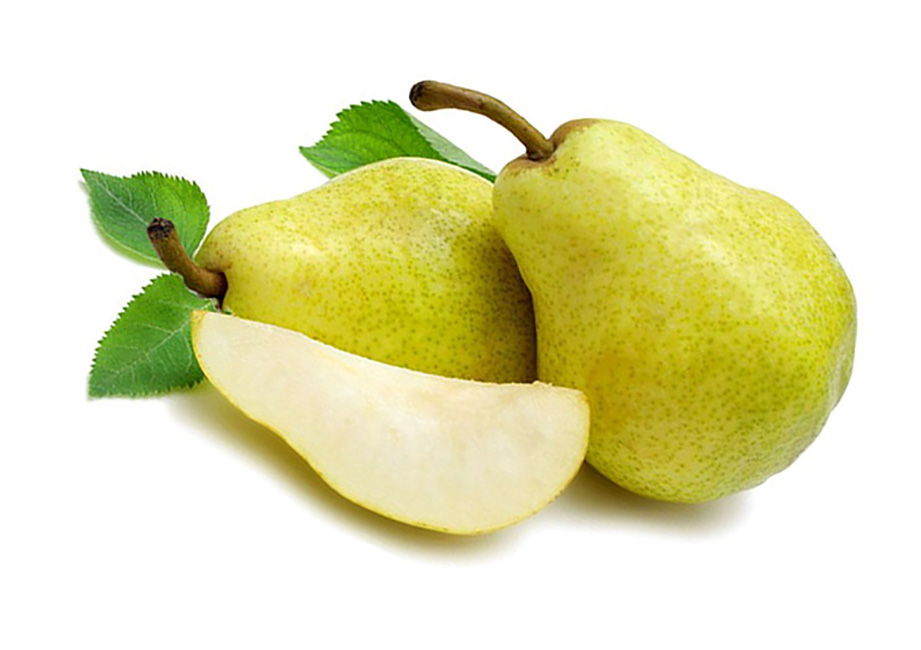
The variety has many advantages, such as: high yield, good taste of fruits and their rich useful properties.
Landing
For planting a seedling, a well-lit, draft-protected place is chosen. Pollinator trees should grow not far from the planting material. Otherwise, there will be no harvest, because Williams culture is not self-fertile. The seedling is chosen not less than one year of life and not less than 1.5 meters in height.
The trees are planted in the spring, after frost, but before the buds swell. Autumn planting is carried out before the onset of the first frost, so that the seedling has time to get all the necessary nutrients from the soil.
Landing technology
The planting hole must be at least 80 cm in diameter and in depth. The root system of the pear is kept in a growth stimulator for about 10 hours, after which it is lowered into the hole and sprinkled with a mixture of garden soil, humus and superphosphate. Then watered abundantly. To support the seedling, a peg is dug in next to it. The distance between the trees is maintained at least 4 meters.
Agrotechnics
For active growth and fruiting, it is necessary to properly care for the crop. Namely:
- Watering should be regular, especially during dry seasons. In the first 3 years, the pear is watered abundantly every month. The area around the trunk should not dry out. In case of excessive precipitation, watering is briefly reduced. They completely stop irrigating the tree before frost.
- Regular weed control.
- Mulching will help keep moisture in the trunk circle.
- Fertilizers are applied three times a year. In the spring, Williams is fed with nitrogen substances, in the summer with a mullein, and in the fall with potassium-containing preparations.
- Pruning is carried out in the spring and autumn. To prevent branching, branches are shortened by 40 cm every year. In addition, weakened or diseased shoots are removed for sanitary pruning.
Beneficial features
In addition to the pleasant taste and low calorie content, Williams pears have other useful qualities:
- Eating pear fruits can significantly improve immunity.
- The pulp of pears has a beneficial effect on the functioning of the gastrointestinal tract, liver and kidneys.
- Due to the high content of vitamin C in fruits, the walls of blood vessels are strengthened, they become elastic and strong.
Possible growing problems
When growing a pear tree, you can face some problems:
- Susceptibility to disease and pest attacks. Do not neglect prevention of diseases and insects.
- Low winter hardiness. Before the onset of cold weather, it is recommended to wrap up young seedlings.
Those gardeners who have not yet planted a Wilms pear on their site have a good opportunity to acquire it. The variety has earned the fame and recognition of summer residents all over the world for its non-whimsicality, high yield, taste and useful properties. With proper care and adherence to the simple basics of agricultural technology, the culture will delight you with a rich fragrant harvest every year.
